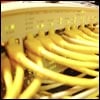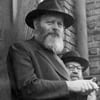In January 1960, a new show debuted on New York’s WEVD Yiddish radio station, presented by Rabbi Yosef Wineberg, a prominent Chabad fundraiser and activist. Each week for the next twenty years Wineberg gave a class on Tanya, the foundational chassidic work by Rabbi Schneur Zalman of Liadi. The Rebbe not only gave his blessing for this endeavor, but also donated money to cover its costs, and personally reviewed and commented on the manuscripts Wineberg prepared in advance of each episode.1
A few months earlier the Rebbe had publicly encouraged the use of new media to spread knowledge of Judaism and chassidism even further afield:
There is publicity through writing and print… there is publicity through speech… but the possibility of publicity through the radio is doubly advantageous. Firstly, the voice does not weaken, but reaches the ends of the earth with the same vigor with which it left the mouth of the speaker. Accordingly, if these are words spoken from the heart they will also enter the heart of the listener. Secondly, the speech is transported without a long interval. Although time does elapse, as everything in this world is bounded by time, it travels very quickly, at the speed of light.2
Responding to objections raised in some religious quarters that radio might be somehow “unholy” or detrimental to Judaism, the Rebbe cited a passage from If the message is a G‑dly one, we should choose to press the button and turn the radio on.the Tanya: “There is nothing physical or spiritual that divides us from G‑d… it is only sin that divides.”3 Nothing in this world is inherently “unholy,” but it is our choice to use the means at our disposal for bad or for good. It is not the medium that is crucial but the message. If the message is a G‑dly one, said the Rebbe, then we should choose to press the button and turn the radio on.4
At the same time, the Rebbe was utterly unwilling to turn a blind eye to the strictures that Jewish law does place on the use of electronic equipment. The technical aspect of these particular questions called for expert knowledge that many commentators did not have. Regarding those who permitted the use of a microphone on Shabbat, the Rebbe commented that they either lack knowledge of how a microphone is built and works, or are ignorant of the halachic considerations, or are ignorant in both areas.5
Another technological issue of concern to the Rebbe was the operation of Jewish owned ships on Shabbat. Having worked on the wiring of US navy ships during the second world war,6 the Rebbe drew on his professional knowledge to refute the widespread claims that there was no halachic objection to traveling with Israeli shipping lines on Shabbat. Due to both technological and economic changes, he explained, these questions could not be answered simply by consulting the rulings of earlier authorities.7 The new practicalities forced him to conclude that there was no way to permit the operation of Jewish run ships on Shabbat:
“The claim that everything is done automatically during the twenty four hours of the Sabbath is absurd, and I state it with the fullest authority, being an engineer myself and having studied marine mechanics.”8
The Rebbe also pointed out the stark irony of traveling to the Holy Land in a way that is forbidden by the Torah, and advised people to fly El Al, take passage on a ship run by non-Jews, or not travel at all.9
The urgency with which the Rebbe lobbied the Israeli rabbinate and government officials to curtail the use of electricity on Shabbat was proportional In 1988 Chabad’s Rabbi Yosef Y. Kazen created the first Jewish outlet on the fledgeling internet. to the passion with which he embraced the use of similar technologies in permitted and positive ways. The Rebbe was neither reactionary nor progressive. He did not allow himself to be swayed by partisan considerations. Only Torah, the twin lights of Jewish law and thought, would guide his way. Just as with anything else, new technologies could never be used in ways that ran contrary to Torah law or ethics, but as tools to further perpetuate and disseminate such ideals they were to be wholeheartedly embraced.
The Rebbe did not stop at radio. Beginning in the 1970s the talks delivered by the Rebbe at public gatherings (farbrengens) were recorded on video. By the 1980s they were broadcast live via satellite television so that people across the world could be instantaneously inspired and enriched.10 In 1988 Chabad’s Rabbi Yosef Y. Kazen created the first Jewish outlet on the fledgeling internet. Chabad’s first website was launched in 1993 and the Chabad.org domaign name was registered in 1994. In 1997 Kazen told ABC’s Good Morning America show that the site was getting some 60,000 visitors per week.11 In 2013 Chabad.org recieved 37 million unique visitors.12
“The ultimate purpose for which these new technologies were developed,” the Rebbe taught, “is that they be used for holy purposes… The fact that they can also be used for mundane purposes, and even things that are the opposite of holiness, is to facilitate free choice… and G‑d commands, requests and grants the capacity that ‘you shall choose life.’13








I am concerned about the robotic humanoids being readied for the public. The images on the internet are shocking. Please address this. And have a Gut Shabbes.